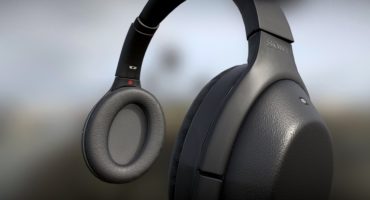Marie Lazar’s designs all have a gorgeous hand-painted quality that add a warm, almost retro-style to her work (check out her portfolio). In this tutorial she gives us a detailed overview of her texturing process using Photoshop, xNormal and nDo.
Hi, my name’s Marie. I’m a 3d artist at Goodgame Studios, where my focus is on environment modeling and texture painting. My personal passion is for all stuff charming and colorful, and this is an example of my process for making stylized textures in Photoshop. This workflow assumes you already have a lowpoly and highpoly version of a prop and you’ve baked a normal map, a bent normal map, and an ambient occlusion (AO) map from it.
I start by building a grayscale version of the texture and blending in the various kinds of lighting. It’s important that the texture have a good composition even before color is added. I want the prop to have an obvious focal point and for the big shapes to read clearly. I make a folder and add these layers, from the bottom up.
- A masked grayscale layer for each type of material: wood, leather, paint, stitches, and metal.
- An AO layer from xNormal set to multiply.
- The blue and green channels from my bent normal maps, set to soft light at low intensities (20-40%). It’s good to have some directional light on textures in this style, but it should make sense for the model. Since I’m confident this shield will almost always be seen upright and from the front, I give it some directional lighting from the top and front.
I give it some directional lighting from the top and front.
- A cavity map generated from the normal map in nDo, set to overlay at low opacity (~30%). I use nDo’s height (all-around) preset rather than the cavity preset so I have control over the width of the edges nDo generates.
- A texture baked from a metal matcap (5a) set to overlay 50%. I use this on the metal parts of my shield to add some reflections to the texture (5b).
- A layer filled with medium grey and set to vivid light. I paint light and dark greys into this layer to tweak the values to my liking. Here I add some dents in to the metal and extra depth to the wood that was missing in the ZBrush sculpt.
- Any last minute adjustment layers to fix shortcomings I see. Here I add a masked brightness layer to make it look like light is hitting the very center of the shield.
When I’m happy with grayscale texture, I start adding color:
- I make a gradient map adjustment layer for each of the material types, mask them to the corresponding materials, and set them to “color” blending mode. These will colorize the underlying layers without pushing the values around. I like to make my gradients cooler in the dark values and warmer in the light ones.
- I add masked layers for stuff like mold and grime that isn’t part of the sculpt. These get set to overlay or multiply.
- Then a color layer with some different hues lightly brushed in, to capture the natural color variation of aged wood and metal.
- I make one last layer and hand-paint in small details like edge highlights. This goes a long way in making the final texture look “painterly” but it’s important to not to go overboard, because if I make any changes to the underlying layers I’ll have to repaint this as well.
When I’m done, all these layers go in a folder called “Base”. Then I generate the roughness and specular textures working off the base texture.
- The Specular folder is just a few adjustment layers placed above the Base folder. I desaturate and darken the non-metals and brighten the metals.
- The Roughness folder is a separate group of adjustment layers on top of the Base folder that desaturate it, invert it, and adjust the levels so the range of brightness is between 70-100%.
- This is a good starting point since darkest parts of the base texture are usually the most occluded and therefore the roughest, but in this case I need to add an extra layer to bring down the contrast between the paint and the bare wood.I also add a layer set to overlay and use a textured brush to add more contrast to the roughness of the wood grain.
And here’s the final result:
This is the standard version of my workflow, but it’s normal to deviate from this process to get the results I want. I’m constantly making changes to all of my layers while I work and checking the results in Sketchfab or Marmoset Toolbag. I like this method because it’s flexible. It allows me to make big changes quickly and it’s easy to generate variations of a texture with different colors and materials. It’s also highly organized, which is important in a production environment where many artists work on the same texture.
I hope this tutorial has given you some insights into your own texturing process. If you have questions or suggestions, please leave a comment!








